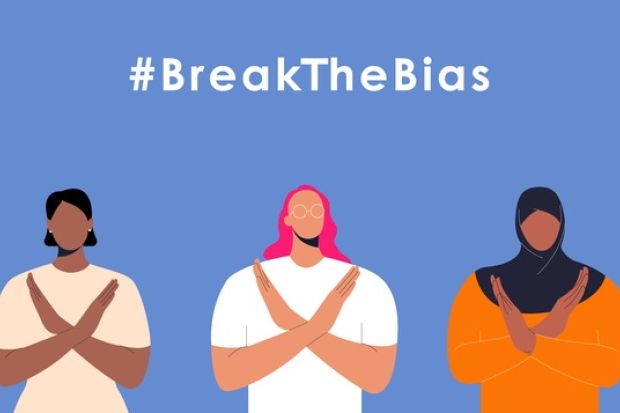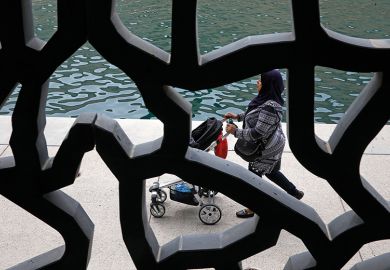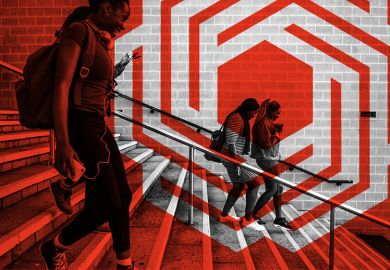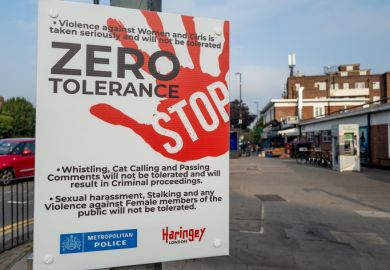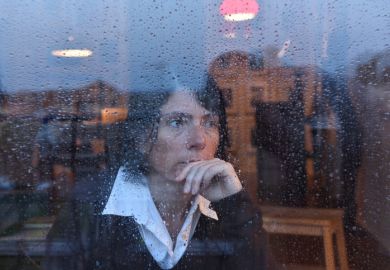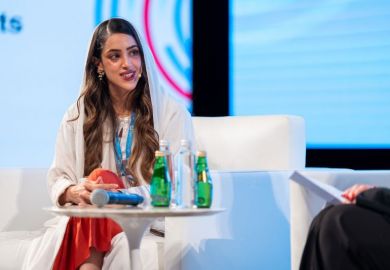The theme of this year’s International Women’s Day is #BreakTheBias. Combatting bias – conscious and unconscious – is at the core of tackling systemically ingrained discrimination and inequality. And many members of our university communities are well placed to support this call to action.
Our understanding of the causes and consequences of bias is informed by academic research from a range of disciplines, which is increasingly accessible via open sources and public engagement. And most universities are striving for greater gender equality within their own ranks, particularly through the adoption of the Athena Swan scheme – using it as a benchmarking tool to support understanding and delivery of change.
And yet change still feels sluggish. Why? I think part of the reason is that we expect all the problems to be swept away in one fell swoop. But it is better to think of meaningful change as a journey: one that requires collective effort and focused leadership.
The journey is effortful in part because where we are headed is not static. Our conception of gender equality is continually changing. How we categorise and understand women is not the same today as it was 100 years ago. Moreover, women’s experiences are vast and varied. To promote gender equality, we now realise that intersectionality (overlapping disadvantages) matters, as do individual life stages and experiences.
It seems likely that progress stalls when we adopt a “one size fits all” approach, and then stop. That approach may bear fruit for some, so it looks like progress – but is not enough to keep up the momentum.
My own view is that more work is still needed to understand lived realities of women, and the various ways that bias affects them. Universities are well placed to carry this out, working with their EDI networks and colleagues with hugely diverse experiences from across the institution. If these efforts are built on foundations of consultation, engagement and shared governance, their very existence will help build trust and community. This means providing safe and open spaces for sharing, with kindness and humility. It means regularly updating our knowledge and skills around gender equality. And it means continuous communication about what we see as the problems and what we are doing about them. We can be more confident that we are still on the right journey when we make the effort to understand what equality means for all women.
We also need to be mindful that it is not just our understanding of gender equality that’s changing. So is the context. It is widely reported, for instance, that Covid-19 has exacerbated inequalities. Women in the UK, to take one example, spent more time doing unpaid domestic work during lockdowns, and were more likely to be furloughed. The academy has also been affected, with early signs that women’s output declined during the pandemic, while men’s increased.
Such trends have the potential to cause long-term damage to the push for gender equality in the sector. It will take bold and collaborative action to ensure we do not simply sit back and wait for the negative impacts of the pandemic to flow through into women’s academic reputations and career progression. Many universities, including my own, were quick to adapt processes to ensure that the immediate consequences of Covid-19 were mitigated. But more will be needed to contain the longer-term impacts – which also include any unintended consequences of new ways of working.
As for leadership, some of this needs to be of the more formal, positional type. This will allow the development of strategy, with clear objectives and progress milestones that can be monitored to ensure institutional accountability. This provides a drumbeat of change.
But fast-tracking progress will also require more distributed, shared leadership. Individuals and teams must be empowered to drive change thorough day-to-day activities and collaborations, such as running a network event, organising a celebration of women’s work, publishing a report, calling someone out, or developing a new call to action.
Such distributed leadership means that wherever we are on the journey to equality, we are simultaneously striving to go further and reaching back to hold the hands of those behind us, hopefully bringing new people in to join us. Especially in times of wider change and uncertainty, shared leadership – and the recognition of this leadership – will be essential to drive change.
There is no silver bullet that will instantly smash that bias. Rather, we will need to keep gradually chipping away at it. But every chip matters. So while I will be crossing my arms on this International Women’s Day, as instructed by the organisers, to symbolise the need to break the bias, I will then open them wide.
I will be ready to listen, collaborate and take action. I will be ready to lead – and to follow.
Georgina Randsley de Moura is deputy vice-chancellor – academic strategy, planning, and performance, and professor of social and organisational psychology at the University of Kent. She is also executive lead for equality, diversity and inclusion.
Register to continue
Why register?
- Registration is free and only takes a moment
- Once registered, you can read 3 articles a month
- Sign up for our newsletter
Subscribe
Or subscribe for unlimited access to:
- Unlimited access to news, views, insights & reviews
- Digital editions
- Digital access to THE’s university and college rankings analysis
Already registered or a current subscriber?
